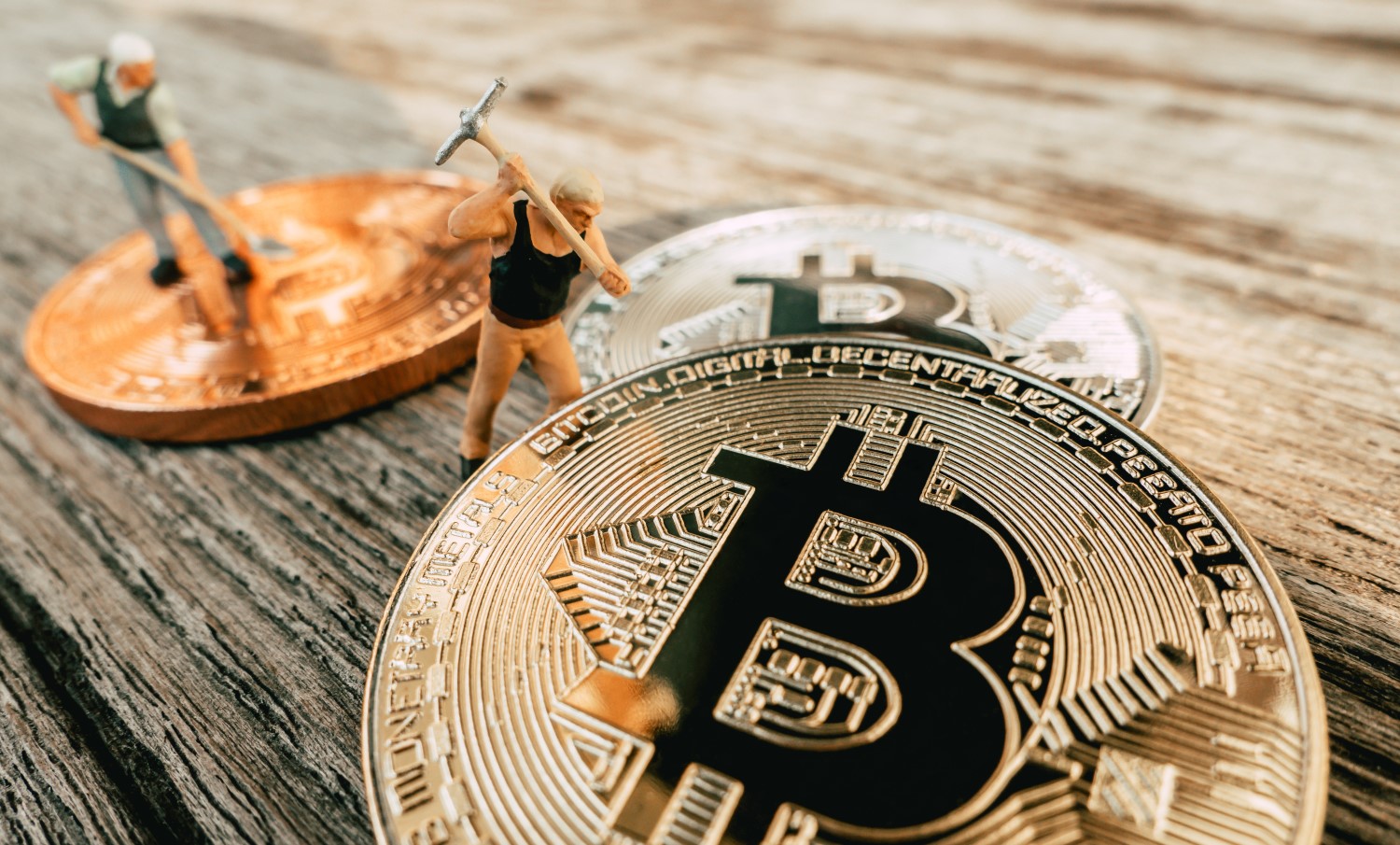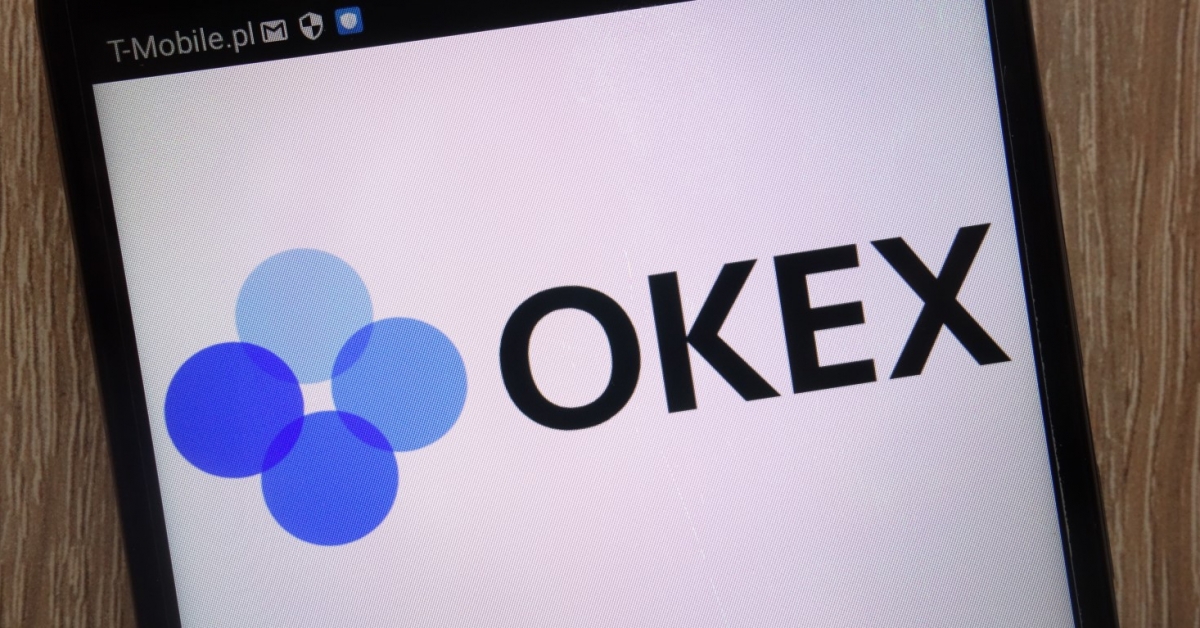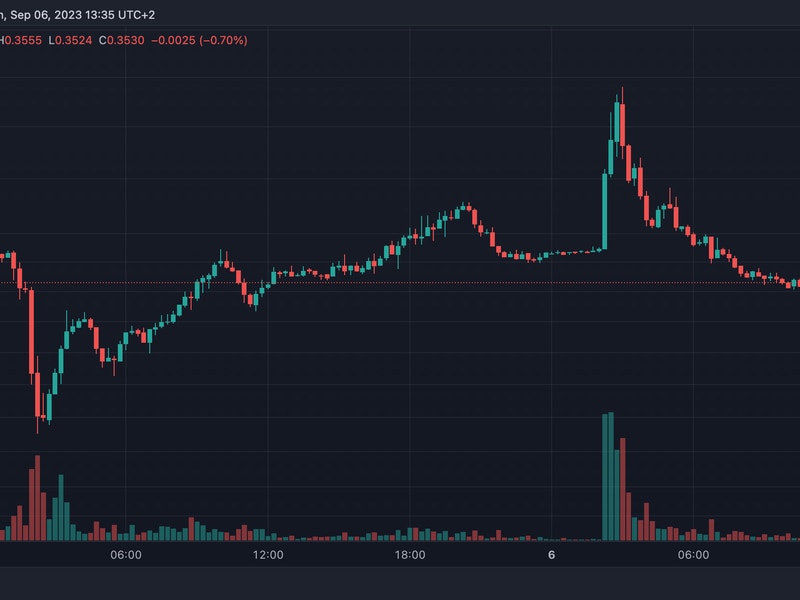‘DePIN’ Is Venture Capitalists’ Latest Crypto Obsession. Can It Match the Hype?
-
Venture capitalists have pumped billions into the DePIN sector already, with some dedicating entire funds to DePIN protocols.
-
Although DePIN projects currently have a combined market capitalization of tens of billions of dollars, the industry faces one of the oldest challenges in crypto: relatively few customers.
-
Analysts point out that DePIN projects that have serious potential are ones where demand for the underlying service is clearly identifiable, meaning that the customers already exist.
So much of the cryptocurrency industry lives in the ether, figuratively or literally: data moving around blockchains, lines moving up or down on price graphs and other largely intangible things.
But a hot emerging trend that has venture capitalists salivating promises a direct tie to the real world: running infrastructure with blockchains. Projects like the Helium protocol, which drives a wireless network with a token-powered ecosystem, or Filecoin’s data-storage platform.
The not-so-catchy term for all this is decentralized physical infrastructure networks, which usually gets shortened as DePIN. A catchy amount of money has already been invested, a sign venture capital firms see potential. According to a Crypto.com report, the top DePIN projects have raised more than $1 billion combined.
“We believe DePIN is a category that has the potential to host a killer app with a billion users,” Pranav Kanade, a portfolio manager of VanEck’s digital assets alpha fund, said in an interview. “These users would be using public blockchains without necessarily realizing they are interacting with a crypto product.”
Yet for all the obvious interest from the VC community, DePIN faces one of the oldest challenges in crypto: relatively few customers.
DePIN projects collectively have tokens worth tens of billions of dollars. But how much revenue are they, as a group, generating? Something like $15 million a year, said Rob Hadick, a general partner at Dragonfly, a crypto venture capital fund. “Most of the protocols aren’t constrained by supply, but by a lack of demand,” he said in an interview.
Nonetheless, DePIN is quickly shooting up the list of crypto buzzwords.
What is DePIN?
DePIN projects are blockchain-based and operate physical hardware infrastructure in a decentralized way. They often use token reward systems to incentivize users to help build out their networks. The sector covers a wide range of areas including wireless connectivity, data collection, computing and data storage to name a few.
Traditionally, infrastructure like a wireless network is completely centralized; giants like AT&T, Deutsche Telekom or China Mobile are in full control of their telephone networks and their customers pay a fee to use their service, and that’s as far as users’ clout goes.
Helium’s DePIN-driven network, on the other hand, is decentralized; members of the public can set up hotspots and get rewarded with HNT tokens for helping run the wireless network. Other DePIN projects have similar community-driven systems.
The total market capitalization of all DePIN tokens exceeded $25 billion as of February, according to Crypto.com research. Computing, storage and artificial intelligence accounted for the majority of that.
While that is an eye-catching amount, that market cap is not pumped up by a flood of retail investors’ money, according to Christopher Newhouse, a decentralized finance, or DeFi, analyst at Cumberland Labs. Instead, DePIN is so far a playground for large institutions and VCs, he added.
“This could be a good opportunity to get involved and pick up a few DePIN-related tokens while people aren’t watching,” Newhouse said in an interview.
For retail traders, there are myriad other distractions at the moment – bitcoin (BTC) hitting a record high and meme coins posting huge rallies, to name just two. “There is a very retail-driven frenzy for hot coins,” Newhouse said. By comparison, it can be harder to buy DePIN tokens since they’re not broadly available on retail-friendly exchanges.
Newhouse said he was examining a few liquid DePIN tokens, including Nosana {{NOS}} and Render (RNDR). “But some of the most interesting ones like io.net haven’t even launched a token yet.”
Solana’s role
Render, io.net and Nosana – which run decentralized computing networks, or platforms to which people can contribute computing resources that others can use – are all built atop the Solana (SOL) blockchain. About 20 DePIN projects are, according to the Solana Foundation. One of the most prominent ones, Helium (HNT), last year abandoned its own blockchain in favor of Solana’s. (Despite Solana’s own history of outages, it is more reliable and stable than Helium’s was, according to Helium blog posts.)
Sean Farrell, head of digital asset strategy at FundStrat, many are there because Solana makes it easy for them. “A lot of these DePIN projects would have been required to build on a high-throughput chain with no adoption or to build their own,” he said. “Now that Solana has entered the fold as a legit place to build, this has solved the infra problem.”
One key advantage Solana has over other layer-1 blockchains like Ethereum (ETH): It has the bandwidth to relatively inexpensively handle a high volume of transactions, rather than needing to pass them off to a more-efficient layer-2 blockchain. It’s famously expensive and sluggish to do transactions on Ethereum, giving rise to the bundle of layer 2s in its ecosystem; Solana has gone a different route.
Hivemapper, a decentralized mapping network that rewards contributors with its native token HONEY, is built on Solana. According to co-founder Ariel Seidman, there were three reasons Hivemapper chose it: low transaction fees, ease-of-use and the quality of the ecosystem.
“DePIN tokens become immediately usable in DeFi apps on Solana as opposed to perhaps being built on an L2 and needing to have interop tools to interact with apps on ETH mainnet or other L2s,” said Farrell. “I think Helium Mobile has demonstrated how to effectively build both sides of a network,” he added. “Supply and demand – I think that’s what was missing from” the layer-1 blockchain it had built. “This is a good proof of concept that other projects can build off of,” Farrell said.
Venture capital interest
DePIN projects have attracted a significant amount of attention from venture capital funds.
Borderless Capital, for instance, has been investing in projects since 2021 and was an early backer of the Helium network. It runs a dedicated DePIN fund that has done more than 30 investments in the space and has raised money from the likes of a16z and Google Ventures.
Borderless Capital noted in their DePIN investment thesis that adoption and usage of these networks (including Helium) are still at very early stages. Borderless told CoinDesk that it is in the process of creating the $100 million DePIN Fund II to support the growing DePIN ecosystems in Solana.
“We see a lot of potential in the intersection of Crypto+AI, mobility, mapping, wireless networks and digital resources, where DePIN has a competitive advantage in terms of efficiency that translates into better and cheaper services being built for the end consumer,” said David Garcia, managing partner at Borderless.
Dragonfly’s Rob Hadick thinks that while DePIN interest amongst VCs is here to stay, there is an issue to be tackled with the lack of users on said protocols.
“Investors spend a lot of their time imagining how crypto and blockchains will bring about a new financial or social paradigm,” Hadick said. “But the hot DePIN projects look and feel more tangible, making it easier to drum up excitement.”
That said, these projects currently generate very little revenue. “This means that their token mechanisms don’t solve the core problem of having to execute traditional go-to-market strategies in very competitive verticals filled with entrenched incumbents,” Hadick said, adding that no DePIN project has accumulated a notable number of users. “It’s unclear how this momentum sustains until, or if, we see someone buck that trend.”
Anand Iyer, founder of Canonical Crypto, an early stage VC, said they are seeing the true utility of decentralized hardware come to life as the computing needs for AI surge.
“Companies and protocols like Akash Network and Ritual are leading the way here and we expect to see more players leveraging decentralized networks for non-crypto use cases,” Iyer said.
Risks and challenges
According to Strahinja Savic, head of data and analytics at FRNT, DePIN projects pose a higher risk for investors compared to more established investments like exchanges, mining or staking infrastructure. He noted: “Incentivizing the development of physical infrastructure is another level of commitment towards a project.”
A large proportion of DePIN projects use tokens as a form of reward to incentivize users to crowdsource and build connected real-world physical infrastructure.
“The use of tokens with questionable long-term value to incentivize the development of what can at times be costly physical infrastructure can be a tall order,” Savic said. “DePIN is higher along the risk curve in a space where risk abounds.”
Brian Rudick, a strategist at GSR, echoes Savic. While he thinks there will be several DePIN projects that make a breakthrough, the key determinant will be the quality of the product or service provided.
“In theory, DePIN projects can pass through their lower infrastructure build costs to customers to spur demand,” he said. “However, in practice, the DePIN products or services offered can be of lower quality than incumbent solutions that were optimized over decades, negating this cost advantage.”
AI-related DePIN projects like Render, as well as decentralized cloud marketplaces like Akash, are ones to watch, according to Rudick.
A Crypto.com report also points out that price volatility could pose a challenge for DePIN projects. Most rewards for DePIN networks are paid out in the platform’s own token, which means price fluctuation in these tokens could impact the earnings for contributors over time, the report said.
“Major volatility may discourage ongoing involvement if rewards are seen as an unreliable revenue stream,” said the report.
Most DePIN projects follow the burn and mint equilibrium model, a format that requires both supply and demand to work. The model uses a two-token system: contributors earn tokens and consumers burn tokens upon using them for payments – sustaining an economic equilibrium.
Pranav at VanEck’s digital assets liquid fund splits a DePIN’s project likelihood of success into two categories. The first: projects that take the “build and they will come” approach. These need to scale the supply side of a network with token incentives, which inflates the token supply.
“Only if the supply of that service reaches a critical scale can the demand side be addressed. These projects tend to be highly speculative, and in many cases, the demand doesn’t exist, making it difficult to find users,” said Pranav.
He said he doesn’t believe this bucket of DePIN projects will succeed in the long-run, as the demand (token burn) is unclear, and the token supply schedule ends up being ever-inflating.
Projects that do have potential, according to Pranav, are ones where demand for the underlying service is clearly identifiable, meaning that the customers already exist. The end goal of these types of protocols is usership that will be using public blockchains without actually realizing they are interacting with a crypto product, according to Pranav.
“This approach would allow the DePIN project to build an economic moat against its legacy centralized competitors,” Pranav explains. “We believe these projects have a higher likelihood of success, as they can balance token supply and demand much earlier in the lifecycle of the token’s existence.”
Edited by Nick Baker.









